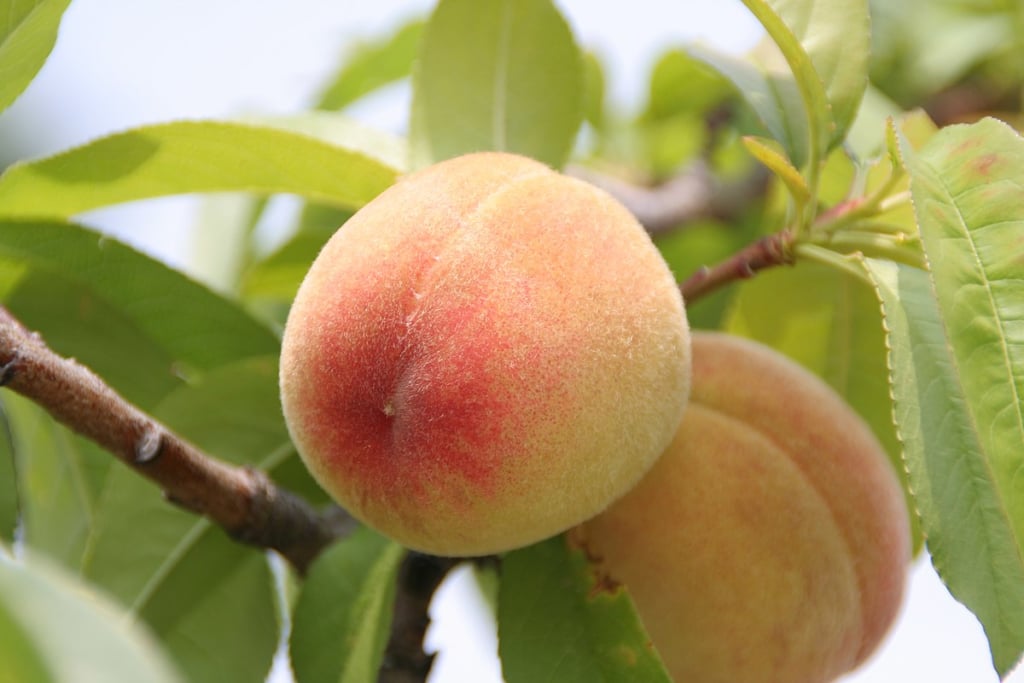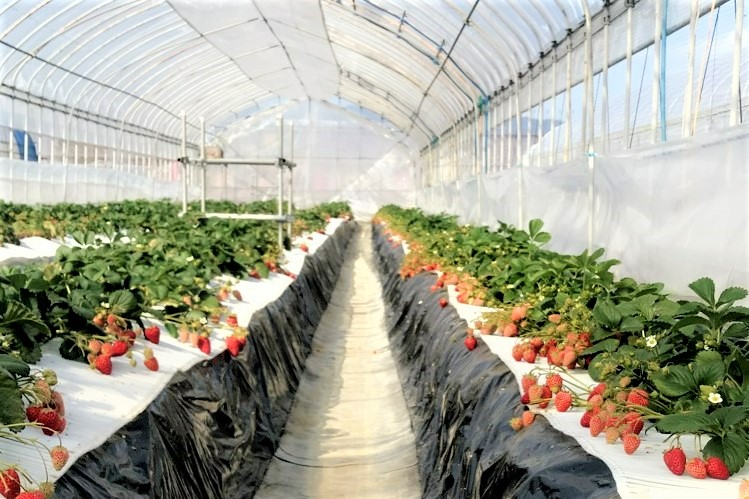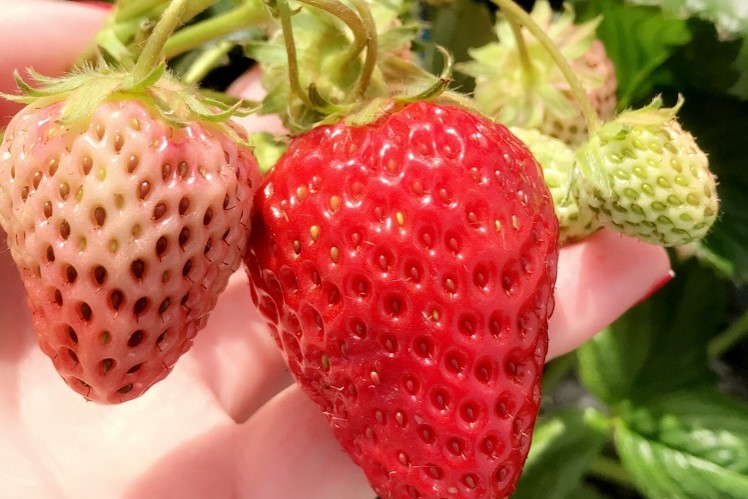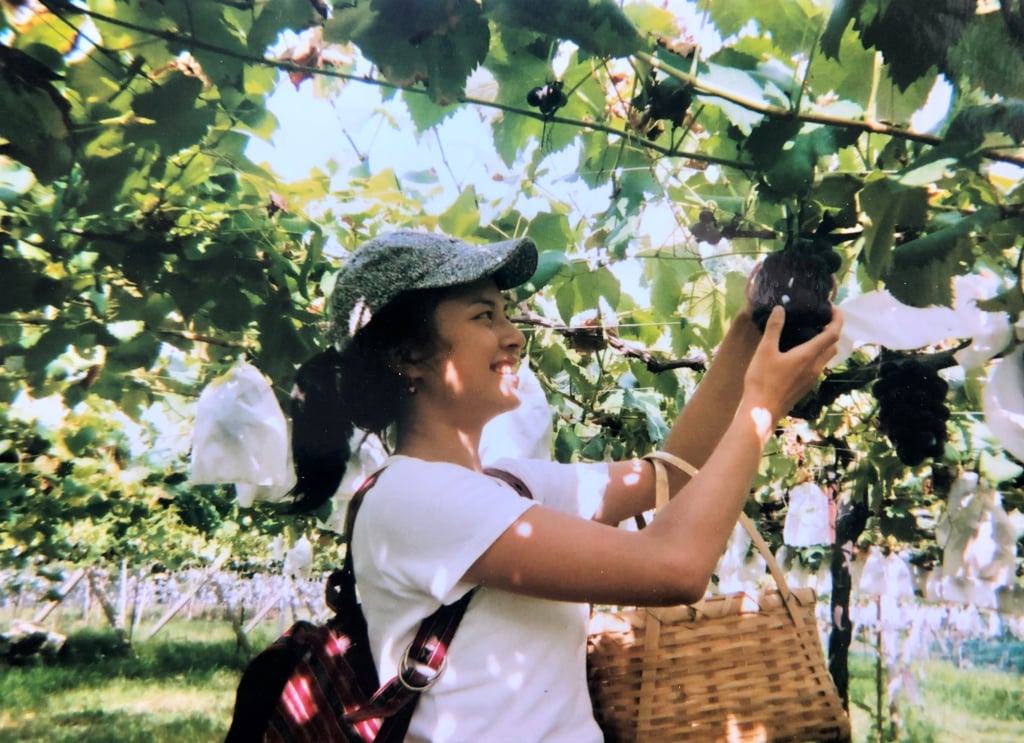Yamanashi, the Kingdom of Fruit
With the highest number of hours of sunlight in Japan, this prefecture is the leading producer of high-quality fruit in the country.

© Wikimedia commons
Conveniently located at the foot of Mount Fuji, Yamanashi prefecture has long been known as a favourable fruit-growing region in Japan.
Peaches, grapes, cherries, strawberries, plums, blueberries and even kiwis: all of these have earnt pride of place on tables in Japan and particularly in the capital, where they have been exported in just a few hours since the Meiji era (1868-1912), guaranteeing incomparable freshness. Sanctified through exceptional products like wine, but also popularised thanks to various festivals and the tradition of unlimited picking and tasting with friends, fruit from Yamanashi is a real institution.
The generosity of nature
Yama, mountain and nashi, pear: the name of the prefecture anticipated its future speciality, fruit. The region is naturally suited to growing most types because the area is surrounded by mountains, sufficiently humid but with little rainfall and mainly sunny, with rich soil and a microclimate that is warm during the day and cold at night; this variation promotes sweetness. Fruit has always been the pride of the region.
Widely available during the Meiji era, when new varieties and products emerged and became popular in Japan, like wine, the extremely high-quality fruit produced in Yamanashi today is just as beautiful, and comes at an impressive price in supermarkets. The prices are unimaginable to other countries because in Japan, consumption of fruit is more associated with luxury, special occasions and gifts, as reflected in their elaborate packaging, reminiscent of jewellery boxes. As such, it isn’t a bad idea to go directly to a farm to buy it, or do some fruit picking and enjoy eating an unlimited amount during an allotted time to get it at a cheaper price.
A work of craftsmanship
Another reason why fruit is expensive is because producing it is extremely complex. The growers are eager to prioritise quality over quantity, and most of them do their work by hand. Tanzawa Farm, for example, produces nectarines, a rare fruit in Japan. Its exceptional nectarines are obtained through hand pollination, then their growth is monitored extremely closely: each fruit is wrapped in paper to protect it from insects, and mirrors are used to ensure that each side gets even exposure to the sun.
Grapes receive the same treatment: along with peaches, they are the region’s main fruit, as it produces the majority of those found in Japan. Painstakingly wrapped by hand. the vines produce huge, juicy grapes, the likes of which are not common in Europe. The prefecture is also a wine-producing region, and is responsible for numerous endemic species and grows varieties with names that sound like they come from all over the world: Muscat Bailey A, My Heart, Violet King, Kotopi, Shirogane and Koshu, the latter from the name of the neighbouring city. To taste these precious fruits on the spot, it is important to respect the seasons and harvest dates which are sometimes fleeting, based on the concept of shun: the optimal time to consume a fruit. That is, unless one is a proponent of nagori, the flavour of the last fruit of the season that already provokes nostalgia.
More information about farms and fruit picking can be found on the Yamanashi Umaii website.

© Victoire Dufay

© Victoire Dufay

© Victoire Dufay
TRENDING
-
Ishiuchi Miyako, A Singular Perspective on Women
Recipient of the 2024 Women in Motion Award, the photographer creates intimate portraits of women through the objects they left behind.

-
Recipe for Ichiraku Ramen from ‘Naruto’ by Danielle Baghernejad
Taken from the popular manga with the character of the same name who loves ramen, this dish is named after the hero's favourite restaurant.

-
Namio Harukawa, Master of Japanese SM Art
'Garden of Domina' offers a dive into the world of an icon of ‘oshiri’, whose work has now reached a global audience.

-
The Tattoos that Marked the Criminals of the Edo Period
Traditional tattoos were strong signifiers; murderers had head tattoos, while theft might result in an arm tattoo.

-
The Emperor of Japanese Porn is Now the Star of a Netflix Series
Deliciously funny, The Naked Director especially succeeds in reviving the atmosphere that was so characteristic of 1980s Japan.





